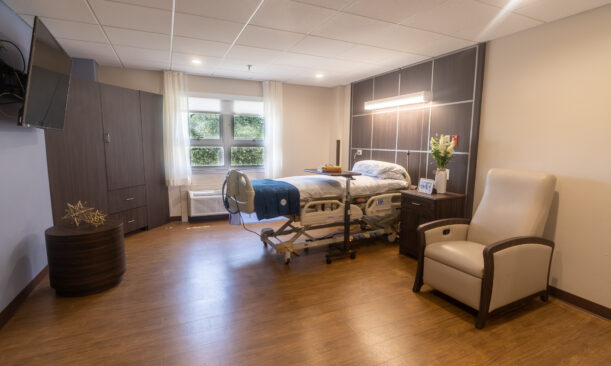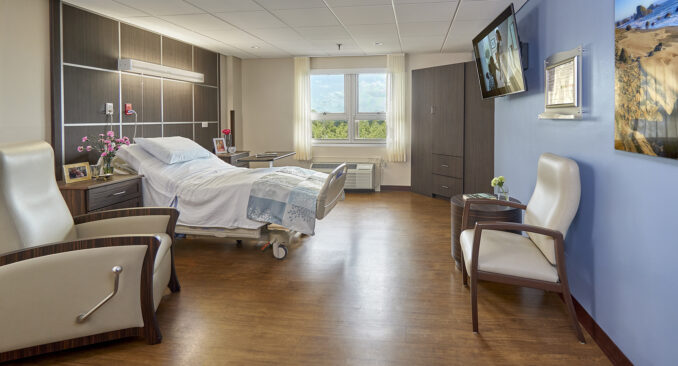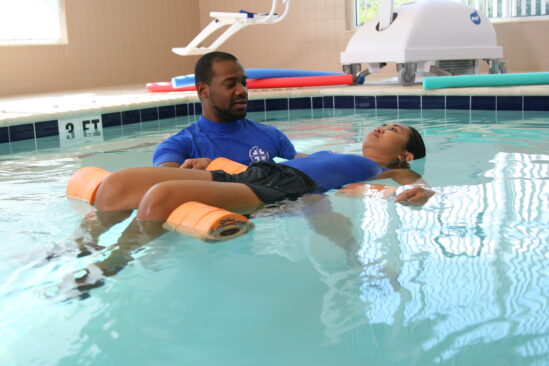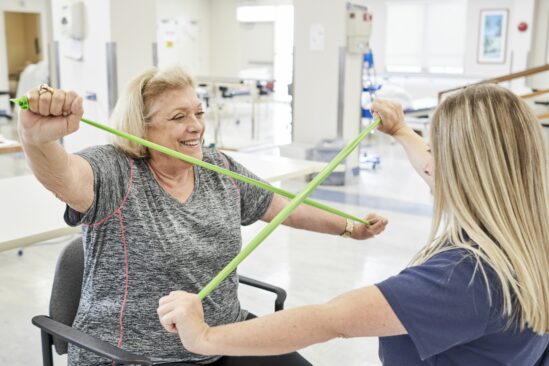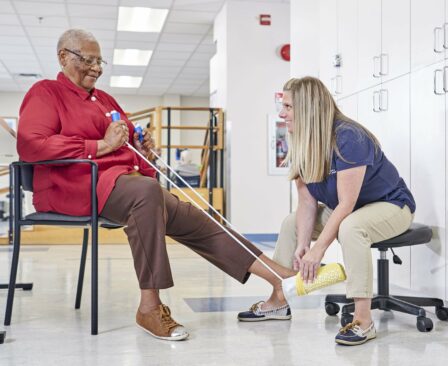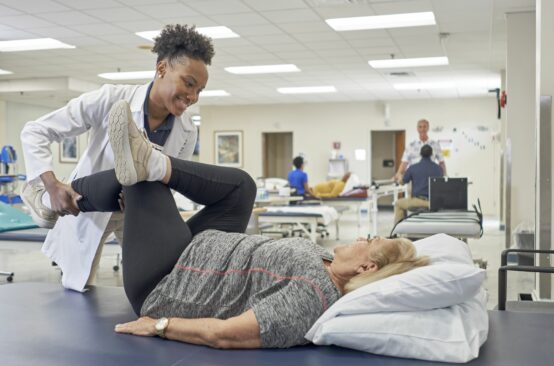St. Catherine’s Rehabilitation Hospital
1050 NE 125th Street
North Miami Fl, 33161
(305) 891-8850
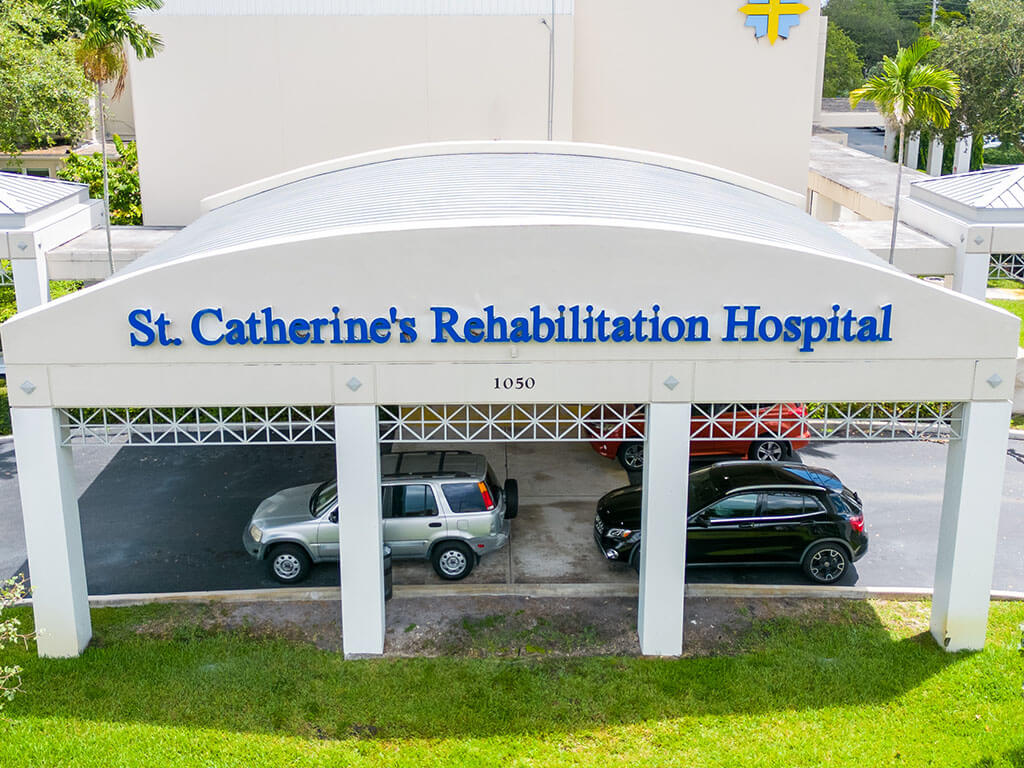
Take a video tour
St. Catherine’s Rehabilitation Hospital is a 22-bed state-of-the-art medical rehabilitation facility designed for patients who can benefit from intensive rehabilitation in an interdisciplinary hospital setting.
An injury or illness may lead to disabilities however, through specialized medical rehabilitation, many patients regain function and learn or improve skills that can compensate for lost abilities.
The St. Catherine’s Rehabilitation Team works with one important goal in mind; to design a program individualized for each patient that helps them to achieve their maximum level of functional independence and return to the community as quickly as possible.
Our specialized rehabilitation programs are designed to meet the needs of individuals who have a broad range of acute or chronic illnesses that cause temporary or permanent disability. Our programs combine medical care with rehabilitation services to help re-establish the functional, physical, cognitive and behavioral skills required to live as independently as possible. Physical, occupational, speech, and respiratory therapies will be provided, as well as physician supervision and round-the-clock nursing care.
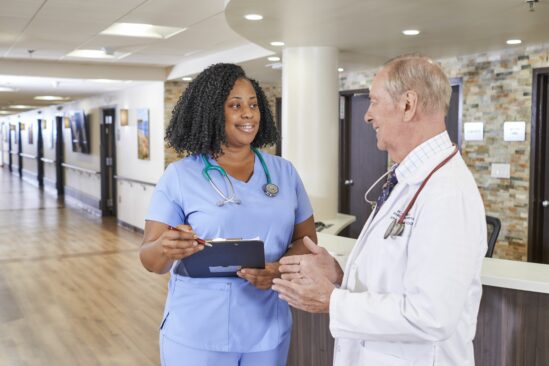
St. Catherine’s is staffed with highly qualified medical professionals whose goal is to ensure that every patient gets the very best care and recovers as quickly as possible so they may return to their productive lives.
St. Catherine’s Rehabilitation Hospital has a transitional apartment/suite where patients practice skills in a living room, kitchen, bathroom, and laundry room. (Transitional suite is designed to re-train patients on activities of daily living before returning home).
Specialized programs at St. Catherine’s Rehabilitation:
- Parkinson’s Disease Interdisciplinary Clinic
Support Groups:
- Stroke Support Group
Specialized Rehabilitation Equipment:
Aquatic Center:
St. Catherine’s Rehabilitation Hospital has an Aquatic Center on campus. A temperature-controlled indoor swimming pool provides both inpatients and outpatients the ability to engage in therapeutic aquatic exercises.
Bioness:
Bioness is a state-of-the-art technology that utilizes electrical stimulation during functional activities of the arm and/or leg to promote faster recovery after a neurological injury such as a stroke, brain injury, spinal cord injury, or multiple sclerosis. The devices are used during activities such as grasping with the hand or walking and research has shown that the devices speed and enhance recovery of motor function in patients with new or chronic neurologic disease. Please visit www.bioness.com to learn more about this exciting new technology.
Balance System SD:
Using this unique device, clinicians can assess neuromuscular control by quantifying the patient’s ability to maintain dynamic postural stability on a static or unstable surface. There are four test protocols including fall risk, athletic single-leg stability, limits of stability and postural stability. The Balance System SD also serves as a valuable training device to enhance sensory abilities that may provide some degree of compensation for impaired reflex mechanisms following injury.
SaeboFlex:
The SaeboFlex will allow patients to immediately begin using their hands functionally in therapy and at home. Even individuals with longstanding neurological injury may benefit from the SaeboFlex. In addition, the ability to use the hand in therapy or at home has been reported as extremely motivating during the recovery process. Please visit http://www.saebo.com/seaboflex.html to find SaeboFlex trained therapists in our facilities.
Partial Body Weight Supported Gait Training:
Using this device, therapists can begin early ambulation (walking) in patients who are not able to support themselves on their legs. Specifically, the device allows therapists to begin gait training very early in patients who have suffered neurological or orthopedic injury. Scientific evidence supports the use of this device in retraining the brain when patients are relearning the use of the legs. There is strong evidence linking early rehabilitation in this type of device and subsequently improved ambulation (walking). The device can be used over a treadmill or over land.
Applications Include:
- Stroke
- Spinal Cord
- Head/Brain Injury
- Amputees
- Orthopedic
- Neurologic
- Vestibular
- Older Adult Patients
